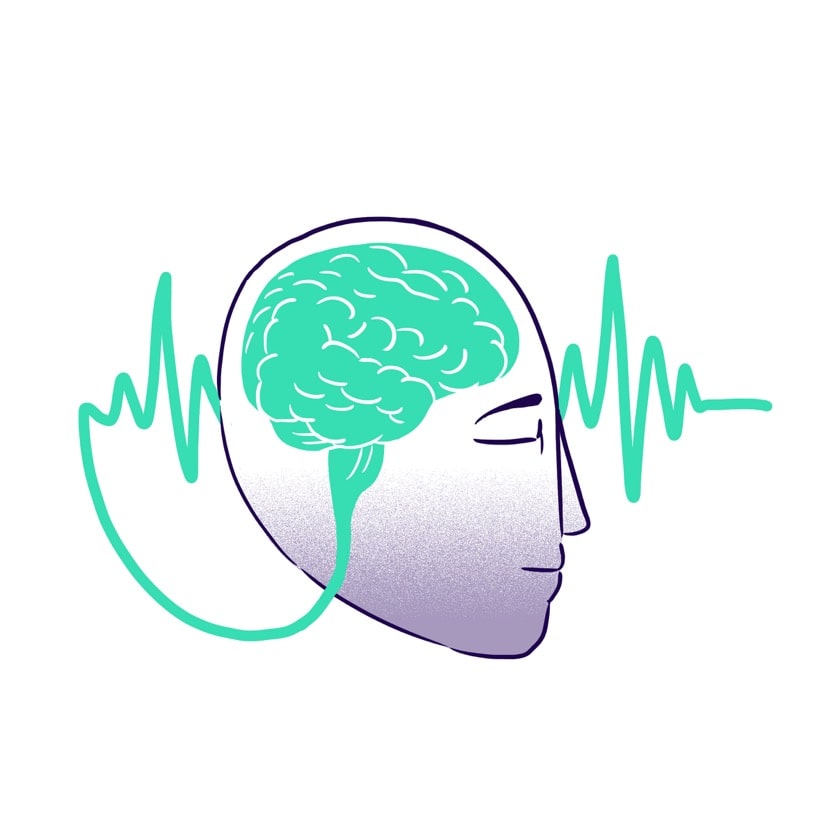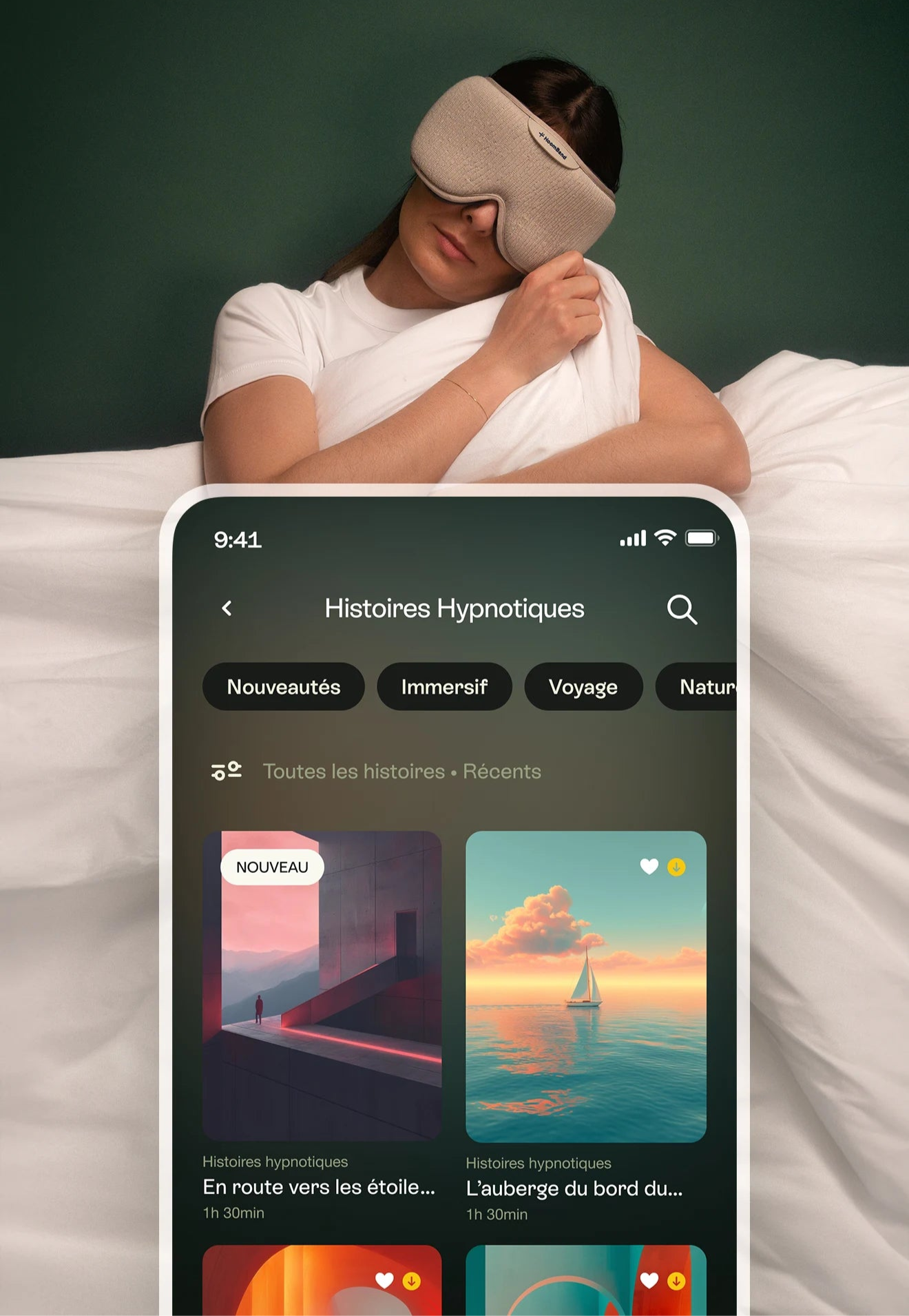Second part: sleep and practice
Almost every time I sit on a meditation cushion, I know I will have to face some kind of struggle. Spending thirty minutes watching a TV series is so much easier than focusing my attention on the sensations of breathing, and ensuring it stays there! The first thing I struggle with is the fact that my mind doesn't really want to stay focused. It likes to wander here and there. When I try to remain still, a feeling of restlessness floods my body and mind. Becoming aware of this and training the mind to be more relaxed is part of the work.
However, an even more insidious and subtle opponent awaits me in my practice. I suddenly feel very drowsy! And I am not the only one encountering this problem: I have heard people snoring throughout an entire meditation session, and seen others fall asleep in the most unusual positions, jolting awake in a mix of frustration and embarrassment. Traditional Buddhist teachings describe over-excitement and drowsiness as two obstacles of equal importance to the practice of meditation, especially at the beginning. A practitioner will therefore seek to counteract these obstacles by developing and cultivating a state of "relaxed alertness". Many traditions aim to extend this state to every moment of life and some, not just Buddhists, claim that such vigilant awareness can extend into sleep.
A decrease in sleep duration and drowsiness is considered a sign of progress by meditation practitioners. Is this contradictory to the proven effectiveness of meditation-based interventions in treating sleep disorders such as insomnia? Perhaps, but it depends on how we assess sleep quality, as well as how we adapt meditation practices to clinical contexts.
Some useful scientific definitions
Addressing sleep disorders and meditation through the lens of Western science requires invoking the concepts of physiological arousal and tonic alertness. In short, arousal describes the state of "wakefulness" of the nervous system. It is regulated by a number of chemical and physiological processes that influence an even greater number of psychophysiological functions, from emotional responses to states of consciousness (during sleep, for example, the level of arousal is lower than during wakefulness). As for tonic alertness, it can be considered the general level of arousal applied to attention. It impacts the ability to maintain attention over a period of time as well as the degree of readiness to respond quickly and effectively to incoming stimuli.
Scientific models of insomnia have considered the state of hyperarousal as one of the main characteristics and causes of sleep problems. Reducing the level of arousal in patients is therefore a major goal of insomnia treatments. This has led to an emphasis on the relaxation effect provided by meditation in the context of clinical interventions. Nevertheless, as we mentioned earlier, meditation practices aim to elevate tonic alertness as much as to relax. In fact, although many studies report increased sleep quality for individuals benefiting from meditation-based interventions, such improvement is not necessarily correlated with classical measures of sleep quality.

Meditation and sleep quantity
Let’s consider the most basic parameter: the amount of sleep. There is no formal scientific evidence that the duration of sleep increases following meditation-based therapeutic interventions. During a study on depressed patients also showing signs of insomnia, not only did the intervention not increase sleep duration, but it was even lower among participants who meditated the most. Outside of the clinical context, there is evidence of an average reduction of 2 hours of sleep after a Vipassana meditation retreat (12 hours of daily practice). A study comparing experienced meditators with control participants of the same age group highlighted that practitioners slept on average one hour less than others, and spent 30 minutes more awake during the night. These results align with traditional Buddhist texts that report an average sleep time of 4 hours per night for the most advanced meditators.
The brain of meditators during sleep
This apparent contradiction is further manifested in experiments studying arousal levels in meditators during sleep and wakefulness using electrophysiological techniques. The classic method is polysomnography, which involves placing electrodes on various parts of the body to record brain, eye, and heart electrical activity before, during, and after the sleep period. Polysomnography allows us to classify different stages of sleep based on the prevalence of fast or slow brain wave activity, but also variations in heart activity, as well as the presence of eye movements. Sleep stages range from light sleep (stage 1) to deep sleep (stage 3), also known as "slow-wave sleep," followed by the stage of paradoxical sleep (or "REM" in English, for "rapid eye movements," due to the characteristic eye movements of this stage). Paradoxical sleep is called so because the brain exhibits a state of wakefulness while the body remains, in contrast, paralyzed. These four stages constitute a sleep cycle, and we go through several cycles each night. Based on this classification, one can imagine that the level of physiological arousal decreases from stage 1 to stage 3, with paradoxical sleep being an exception.
Thanks to polysomnography, we can quantify the time spent in each stage of sleep. We can also measure the time it takes to fall asleep, as well as the time spent awake during the night, or the number of micro-awakenings. It is also possible to measure the power of brain waves at low and high frequencies at any stage of sleep. Stage 3, for example, is characterized by increased power of slow-frequency waves. This does not mean that the brain stops its high-frequency activity at that moment; it just means that slow waves become predominant over fast waves. As we will see, this is an important measure since high-frequency brain activity is associated with a higher level of arousal. In simple terms, high-frequency waves reflect the brain's processing of rapidly evolving stimuli (such as conscious visual and auditory processing during wakefulness), while slow-frequency activity involves slower processes (such as breathing and other bodily activities, or slow changes in the environment).
The use of polysomnography on experienced meditators has highlighted an elongation of stage 1 sleep, a reduction in deep sleep time, and even signatures of awake brain activity during non-paradoxical sleep. More frequent awakenings during the night as well as reduced deep sleep time have also been observed in depressed patients after a meditation-based intervention (in the same study previously mentioned). A study conducted on experienced meditators revealed that, during non-paradoxical sleep, the power of high-frequency waves was higher in them compared to that of a control group. And the power of high-frequency waves was directly related to the amount of practice in each meditator's life.
Making sense of contradictory evidence
These results indicate that the practice of meditation increases physiological arousal during sleep. This observation contradicts the usual conception that meditation is merely relaxation and seems to contradict studies demonstrating the effectiveness of meditation-based interventions for treating sleep disorders (it is important to note that many studies have described the same phenomenon of increased high-frequency brain activity in patients suffering from insomnia). However, all these studies converge on the issue of improving sleep quality in patients and meditation practitioners. And, more interestingly, such an increase in physiological arousal has been associated with a decrease in depression symptoms in patients.
How can we make sense of these divergent results? On one hand, they represent empirical confirmation of traditional Buddhist precepts that invite cultivating a "calm vigilance" (balance between relaxation and alertness) through meditation training. On the other hand, these results highlight the limitations of Western scientific approaches applied to psychophysiological conditions such as insomnia. Indeed, these studies show us how a state of arousal can coexist with a feeling of relaxation and better sleep quality. More importantly in my view, they show that physiological states are not easily correlated with individuals' subjective experience, and that the relationship between physical states and psychological conditions is more complex than we think.
Sources :
Britton, W. B., Haynes, P. L., Fridel, K. W., & Bootzin, R. R. (2010). Polysomnographic and Subjective Profiles of Sleep Continuity Before and After Mindfulness-Based Cognitive Therapy in Partially Remitted Depression, "Psychosomatic Medicine" 72(6), 539–548. Britton, W. B., Lindahl, J. R., Cahn, B. R., Davis, J. H., & Goldman, R. E. (2014). Awakening is not a metaphor: The effects of Buddhist meditation practices on basic wakefulness, "Annals of the New York Academy of Sciences", 1307(1), 64–81. Ferrarelli, F., Smith, R., Dentico, D., Riedner, B. A., Zennig, C., Benca, R. M., Lutz, A., Davidson, R. J., & Tononi, G. (2013). Experienced Mindfulness Meditators Exhibit Higher Parietal-Occipital EEG Gamma Activity during NREM Sleep, "PLoS ONE", 8(8), e73417. Goldstein, M. R., Turner, A. D., Dawson, S. C., Segal, Z. V., Shapiro, S. L., Wyatt, J. K., Manber, R., Sholtes, D., & Ong, J. C. (2019). Increased high-frequency NREM EEG power associated with mindfulness-based interventions for chronic insomnia: Preliminary findings from spectral analysis, "Journal of Psychosomatic Research", 120, 12–19.


